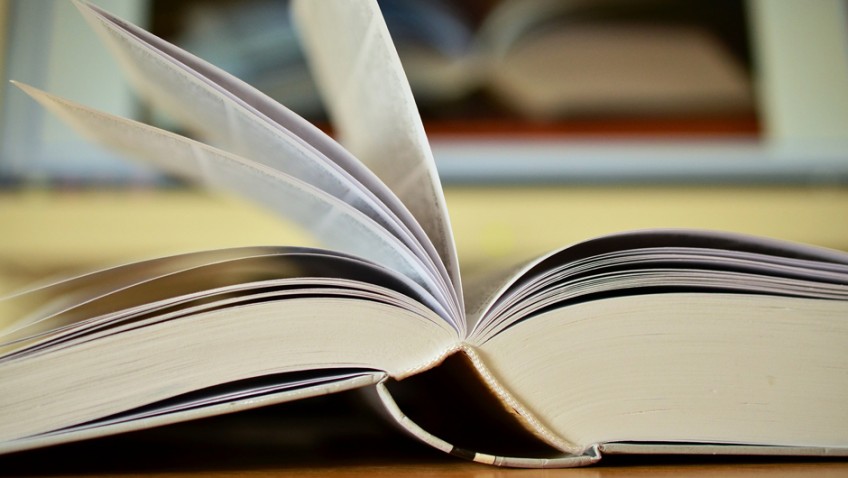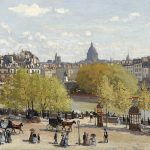Robert Tanitch’s Round-up of Books No 5 (2018)
Art: The Definitive Visual Guide (Dorling Kindersley £30). This lavishly illustrated catalogue of art history is aimed at new readers to the art world who want to be able to read a painting better. At £30 it is a fantastic bargain and perfect for the whole family as a work of reference. The reader can explore the major milestones and key artistic movements from prehistoric cave paintings and to modern installation. The commentary, analysis and captions are succinct and immediately accessible.
Architecture: A Visual History by Jonathan Glancey (Dorling and Kindersley £20). This is a useful, quick and richly illustrated guide. What is your preference? Ancient Greek? Gothic? Romanesque? Renaissance? Baroque? Rococo or Fascist modern? Do you have a favourite building? Here is a chance to refresh your memory? Karnak, Angkor Wat, Petra, Taj Mahal, Mont St Michel, Notre Dame, Salisbury Cathedral, Fontainebleau, Versailles, Blenheim Palace, Regent Crescent Bath, Sargrada Familia, Sydney Opera House, Guggenheim Museum in New York and Bilbao. And there is so much more. This book could help you to decide your next holiday.
Rice’s Language of Buildings by Matthew Rice (Bloomsbury £20). If you enjoy looking at buildings but do not have the vocabulary to describe them and you want to be able to do so more fluently, then this book, attractively illustrated with watercolour drawings and hand-drawn annotations, is going to be extremely useful. The book is principally of details and external decorations and features. There is a list of British buildings to visit and the list covers fourteen hundred years and comes right up to the present. Rice says the best way to understand a building is to sit in front of it and draw it or photograph it.
The Story of Design from the Palaeolithic to the Present by Charlotte & Peter Fiell (Goodman Fiell £25) is invaluable for vocational and university students. Lavishly illustrated it covers, chronologically, architecture, graphic design, product design and interior design. The unique relationship between design and society is the way in which it reflects the human condition. “If it looks right, it probably is right.” Ultimate success depends on its functionality; but at the same time the more beautiful the object is, the more pleasurable it is to use.
Designed in the USSR: 1950-1989 (Phaidon £24.95). From the collection of the Moscow Design Museum. This survey of everyday domestic and consumer products which relate to the individual’s wants and needs includes sweet rappers, bottles, packaging, washing machines, telephones, desk fans, transistor radios, movie adverts and social awareness posters. Function and utility are the driving force, a mixture therefore of the practical and the kitsch and the playful and the politicized.
History of the World by Map by Map (Dorling Kindersley £25). 140 specially commissioned maps plus contemporary paintings and photographs tell the story of pivotal episodes in world history from pre-history to the present day and covering key periods such as the age of Ancient Greece, the Renaissance, World War 2 and globalization. The purpose made regional maps and the global maps provide the reader with detailed and visual impression of events and the impact they had on history and geography.
All About Saul Leiter (Thames & Hudson £19.95). Saul Leiter (1923-2013) was influenced by Bonnard and Hokusai and he had a painterly approach to photography. He fell into obscurity in the 1980s. (Being ignored is a great privilege… I always ensure I will step into oblivion.) He liked working in the street. He liked colour. He liked the mundane and ordinary. We live in a world, he said, where almost everything is a photographic beauty.”
The Magic of Handwriting. The Pedro Correa do Lago Collection at The Morgan Library & Museum (Taschen £30). Do Logo has been assembling his collection of handwritten letters, manuscripts, and musical compositions as well as inscribed photographs, documents and drawings since he was in his teens. It is an amazing collection, spanning nearly nine hundred years. I cannot imagine anybody would not be interested in the handwriting of Gaugin, Van Gogh, Magritte, Lucrezia Borgia, Marie Antoinette, Lope de Vega, Goethe, Kafka, Darwin, Bach, Mozart and many others.This is a truly lovely book. The photographs of the letters and documents are so good, filling the page and sometimes a double page, that it can feel as if you actually have the document in your hand. All the documents have been typed so they are easy to read and where necessary translated. It would be invidious to pick out any one person but I will mention how neat was Victoria when she was 7 years old. Proust is a big shock. He wrote on such odd shapes and sizes of paper that it must have been an absolute nightmare for his publisher.
To learn more about Robert Tanitch and his reviews, click here to go to his website












